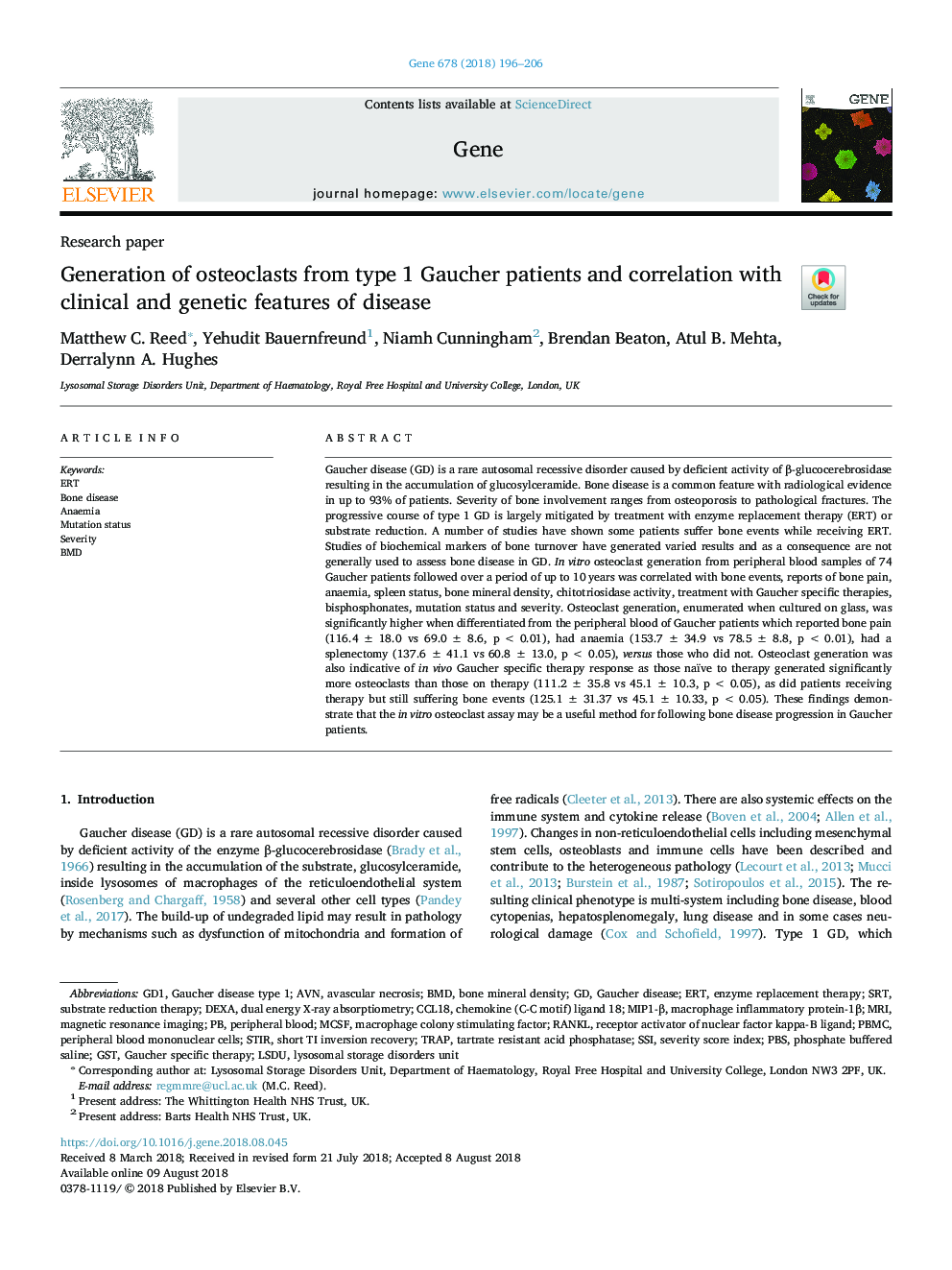| کد مقاله | کد نشریه | سال انتشار | مقاله انگلیسی | نسخه تمام متن |
|---|---|---|---|---|
| 8644390 | 1569758 | 2018 | 11 صفحه PDF | دانلود رایگان |
عنوان انگلیسی مقاله ISI
Generation of osteoclasts from type 1 Gaucher patients and correlation with clinical and genetic features of disease
دانلود مقاله + سفارش ترجمه
دانلود مقاله ISI انگلیسی
رایگان برای ایرانیان
کلمات کلیدی
PBSGD1chemokine (C-C motif) ligand 18MCSFSTIRAVNDEXAsRTTRAPBMDSSIRANKLGSTPBMCCCL18enzyme replacement therapy - آنزیم جایگزین درمانTartrate resistant acid phosphatase - اسید فسفاتاز مقاوم در برابر تتراتMRI - امآرآی یا تصویرسازی تشدید مغناطیسیBone disease - بیماری استخوانیGaucher disease - بیماری گوچهBone mineral density - تراکم معدنی استخوانMagnetic resonance imaging - تصویربرداری رزونانس مغناطیسیdual energy X-ray absorptiometry - جذب سنجی اشعه ایکس انرژی دوگانهPeripheral blood - خون محیطیSubstrate reduction therapy - درمان با سوبستراperipheral blood mononuclear cells - سلول های تک هسته ای خون محیطیSeverity - شدتmacrophage colony stimulating factor - فاکتور تحریک کننده کلون ماکروفاژPhosphate buffered saline - فسفات بافر شورmacrophage inflammatory protein-1β - ماکروفاژ التهابی پروتئین 1βGaucher disease type 1 - نوع بیماری گوچه 1Avascular necrosis - نکروز آواسکولار، بافت مردگی بی خونیERT - هستندMutation status - وضعیت جهشanaemia - کم خونی
موضوعات مرتبط
علوم زیستی و بیوفناوری
بیوشیمی، ژنتیک و زیست شناسی مولکولی
ژنتیک
پیش نمایش صفحه اول مقاله

چکیده انگلیسی
Gaucher disease (GD) is a rare autosomal recessive disorder caused by deficient activity of β-glucocerebrosidase resulting in the accumulation of glucosylceramide. Bone disease is a common feature with radiological evidence in up to 93% of patients. Severity of bone involvement ranges from osteoporosis to pathological fractures. The progressive course of type 1 GD is largely mitigated by treatment with enzyme replacement therapy (ERT) or substrate reduction. A number of studies have shown some patients suffer bone events while receiving ERT. Studies of biochemical markers of bone turnover have generated varied results and as a consequence are not generally used to assess bone disease in GD. In vitro osteoclast generation from peripheral blood samples of 74 Gaucher patients followed over a period of up to 10â¯years was correlated with bone events, reports of bone pain, anaemia, spleen status, bone mineral density, chitotriosidase activity, treatment with Gaucher specific therapies, bisphosphonates, mutation status and severity. Osteoclast generation, enumerated when cultured on glass, was significantly higher when differentiated from the peripheral blood of Gaucher patients which reported bone pain (116.4â¯Â±â¯18.0 vs 69.0â¯Â±â¯8.6, pâ¯<â¯0.01), had anaemia (153.7â¯Â±â¯34.9 vs 78.5â¯Â±â¯8.8, pâ¯<â¯0.01), had a splenectomy (137.6â¯Â±â¯41.1 vs 60.8â¯Â±â¯13.0, pâ¯<â¯0.05), versus those who did not. Osteoclast generation was also indicative of in vivo Gaucher specific therapy response as those naïve to therapy generated significantly more osteoclasts than those on therapy (111.2â¯Â±â¯35.8 vs 45.1â¯Â±â¯10.3, pâ¯<â¯0.05), as did patients receiving therapy but still suffering bone events (125.1â¯Â±â¯31.37 vs 45.1â¯Â±â¯10.33, pâ¯<â¯0.05). These findings demonstrate that the in vitro osteoclast assay may be a useful method for following bone disease progression in Gaucher patients.
ناشر
Database: Elsevier - ScienceDirect (ساینس دایرکت)
Journal: Gene - Volume 678, 15 December 2018, Pages 196-206
Journal: Gene - Volume 678, 15 December 2018, Pages 196-206
نویسندگان
Matthew C. Reed, Yehudit Bauernfreund, Niamh Cunningham, Brendan Beaton, Atul B. Mehta, Derralynn A. Hughes,